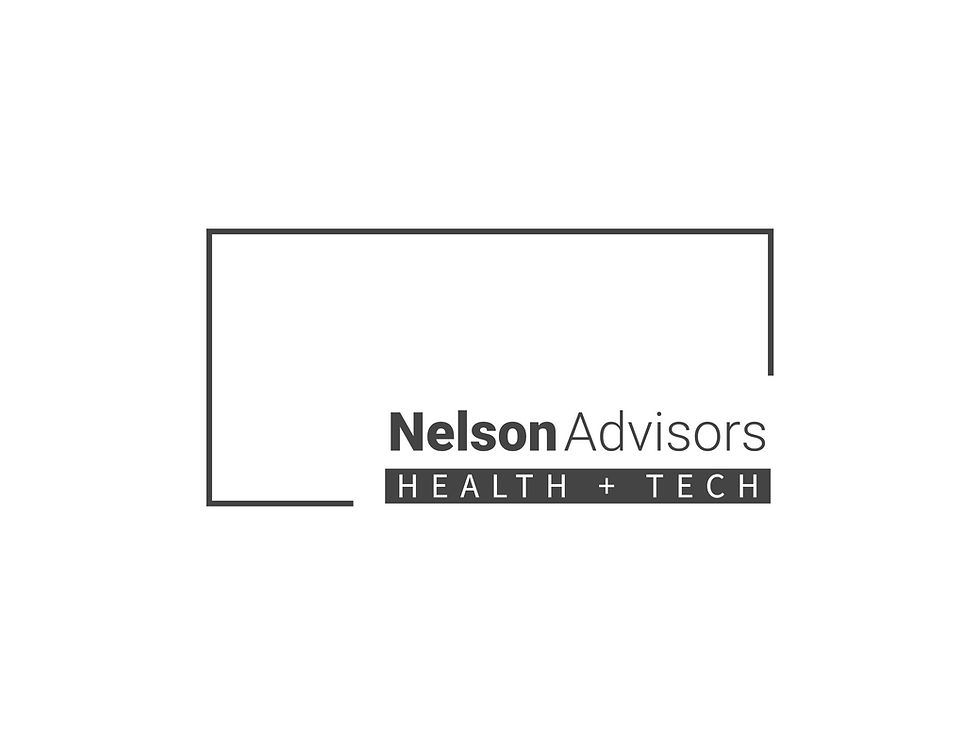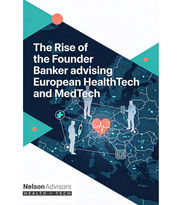Rubric evaluations: the next frontier in Healthcare AI
- Lloyd Price
- May 13
- 6 min read

Rubric evaluations: the next frontier in Healthcare AI
Rubric evaluations, as exemplified by OpenAI’s HealthBench, represent a critical advancement in healthcare AI by providing structured, physician-validated frameworks to assess large language models (LLMs). These rubrics, systematic scoring guides that measure accuracy, context, completeness and safety are emerging as the next frontier in healthcare AI.
They shift AI development from generic performance metrics to clinically relevant, human-centred evaluations, ensuring models align with real-world medical needs. Below, we explore why rubric evaluations are pivotal, their current role and potential to shape the future of healthcare AI.
Why Rubric Evaluations Are the Next Frontier
Clinical Relevance Over Generic Metrics
Traditional AI benchmarks (e.g., MMLU for general knowledge) don’t capture the nuances of healthcare, where errors can be life-threatening. HealthBench’s rubrics, developed by over 250 physicians, evaluate LLMs on specific tasks like triage or patient communication, scoring responses against clinical standards (eg. recommending emergency services for an unresponsive patient).
Example: In HealthBench, a model’s response to a stroke query is scored on accuracy (correct symptoms identified?), context (urgency conveyed?), and completeness (all steps included?). This granular feedback ensures AI meets medical rigour, unlike broad accuracy percentages.
Standardising Safety and Trust:
Healthcare AI must be safe and reliable to gain trust from clinicians and patients. Rubrics provide transparent, reproducible criteria, reducing subjectivity in evaluations. HealthBench’s 48,562 evaluation points, scored by GPT-4.1 but based on physician input, offer a standardized way to flag errors (e.g., missing a critical triage step).
Potential: As rubrics evolve, they could become industry standards, guiding regulatory bodies like the FDA to certify AI tools, similar to how clinical trials validate drugs.
Bridging AI and Human Expertise
Rubrics incorporate human expertise, ensuring AI aligns with physician judgment rather than replacing it. HealthBench’s physician-written rubrics reflect real-world priorities, like cultural sensitivity or multilingual clarity, which generic AI training might overlook.
Example: A rubric might penalise an AI for using technical jargon with a non-English-speaking patient, pushing developers to prioritise patient friendly communication.
Driving Iterative Improvement
Rubric evaluations provide detailed feedback, enabling developers to pinpoint weaknesses. In HealthBench, OpenAI’s o3 model scored 60%, xAI’s Grok 54%, and Google’s Gemini 2.5 Pro 52%, with rubrics highlighting specific areas (e.g., Grok’s strength in context but weaker completeness). This guides targeted model refinement.
Potential: Automated rubric feedback loops could accelerate AI training, making models more robust over time.
Current Role in Healthcare AI
HealthBench demonstrates rubric evaluations in action:
Structure: Each of its 5,000 multi-turn health conversations is assessed using rubrics that score responses across dimensions like accuracy (correct medical advice?), safety (no harmful suggestions?), and empathy (patient-appropriate tone?). For instance, a scenario involving a diabetic patient’s insulin query might score 77% if the AI correctly advises dosage but omits dietary guidance.
Scale: Covering 26 specialties and 49 languages, HealthBench’s rubrics ensure broad applicability, testing AI in diverse contexts like rural clinics or multilingual settings.
Transparency: Open-sourced on OpenAI’s GitHub, the rubrics allow global researchers to adopt or adapt them, fostering collaboration.
Limitations: Current rubrics rely on GPT-4.1 for scoring, which introduces potential bias, and may not cover all healthcare scenarios (e.g., mental health or rare diseases). Human oversight is still needed to validate scores.
Potential of Rubric Evaluations in Healthcare AI
Rubric evaluations could transform healthcare AI in several ways:
Personalised and Equitable Care
Potential: Rubrics can evaluate AI’s ability to tailor responses to diverse populations, as HealthBench does with 49 languages. Future rubrics could assess cultural competence or accessibility for disabilities, ensuring AI serves marginalized groups.
Impact: Reduces healthcare disparities, especially in regions with low physician density (e.g., 0.2 doctors per 1,000 in sub-Saharan Africa vs. 2.6 in the US.).
Example: A rubric could score an AI’s response to a non-English-speaking patient, penalising generic advice and rewarding culturally relevant suggestions.
Regulatory and Ethical Standards
Potential: Rubrics could form the basis for regulatory frameworks, defining “safe” AI performance. For example, a rubric might require 90% accuracy in triage tasks for FDA approval.
Impact: Accelerates deployment of AI tools while ensuring compliance with laws like HIPAA or GDPR, building public trust.
Example: Rubrics could be integrated into certification processes, similar to how Joint Commission standards evaluate hospitals.
Real-Time Clinical Integration
Potential: Rubrics could be embedded in AI systems to provide real-time feedback during clinical use. For instance, an AI assisting a doctor with diagnosis could display a rubric score (e.g., 85% confidence in recommending antibiotics) to guide human decisions.
Impact: Enhances AI as a decision-support tool, reducing errors (e.g., misdiagnosis rates of 5-20% in the U.S.) and improving outcomes.
Example: A triage chatbot could use rubrics to flag low-confidence responses, prompting escalation to a physician.
Expanding Scope and Complexity
Potential: Future rubrics could cover advanced tasks like longitudinal care (e.g., managing chronic diseases over months) or interdisciplinary scenarios (e.g., coordinating oncology and cardiology). They could also evaluate multimodal AI (e.g., analyzing medical images alongside text).
Impact: Enables AI to handle complex cases, supporting precision medicine or rare disease management.
Example: A rubric might assess an AI’s ability to integrate lab results, patient history, and imaging to recommend a cancer treatment plan.
Global Collaboration and Scalability
Potential: Open-source rubrics, like HealthBench’s, allow global researchers to contribute, creating region-specific or specialty-specific versions. Crowdsourced rubric development could address local healthcare challenges.
Impact: Scales AI solutions to low-resource settings, where 50% of the world’s population lacks basic healthcare access.
Example: A rubric tailored for rural India could prioritise AI’s ability to handle infectious diseases with limited diagnostic tools.
Challenges and Risks
Bias in Rubric Design: Rubrics reflect the perspectives of their creators (e.g., HealthBench’s 250 physicians). If not diverse enough, they may overlook certain populations or conditions.
Scalability Limits: Creating comprehensive rubrics for all healthcare scenarios is resource-intensive, and HealthBench’s 5,000 cases cover only a fraction of possible interactions.
Overreliance on Automation: Using AI (e.g., GPT-4.1) to score rubrics risks propagating errors. Human validation remains essential but costly.
Resistance to Adoption: Clinicians may distrust rubric-based AI evaluations if they don’t align with real-world practice or if scores are misinterpreted (e.g., X posts falsely claiming AI outperforms doctors).
Future Directions
Dynamic Rubrics: Develop adaptive rubrics that evolve with medical guidelines or patient feedback, using real-world data to stay current.
Multimodal Integration: Extend rubrics to evaluate AI that processes text, images, and sensor data (e.g., wearables), ensuring holistic assessments.
Patient Centred Metrics: Include patient satisfaction or empowerment in rubrics, balancing clinical accuracy with communication quality.
Global Standards: Collaborate with WHO or medical boards to create universal rubric frameworks, harmonising AI evaluation across countries.
Real-Time Deployment: Embed rubrics in clinical workflows, allowing AI to self-assess and improve on the fly while maintaining human oversight.
Rubric evaluations are poised to be the next frontier in healthcare AI by providing a rigorous, transparent and clinically grounded way to assess and improve LLMs. HealthBench’s physician validated rubrics demonstrate their value in ensuring AI is accurate, safe and equitable, but their potential extends far beyond current applications. By driving personalised care, regulatory compliance, and global collaboration, rubrics could unlock AI’s ability to transform healthcare > reducing errors, expanding access and supporting clinicians, while maintaining trust and accountability.
Nelson Advisors > Healthcare Technology M&A
.
Nelson Advisors specialise in mergers, acquisitions and partnerships for Digital Health, HealthTech, Health IT, Consumer HealthTech, Healthcare Cybersecurity, Healthcare AI companies based in the UK, Europe and North America. www.nelsonadvisors.co.uk
Nelson Advisors regularly publish Healthcare Technology thought leadership articles covering market insights, trends, analysis & predictions @ https://www.healthcare.digital
We share our views on the latest Healthcare Technology mergers, acquisitions and partnerships with insights, analysis and predictions in our LinkedIn Newsletter every week, subscribe today! https://lnkd.in/e5hTp_xb
Founders for Founders > We pride ourselves on our DNA as ‘HealthTech entrepreneurs advising HealthTech entrepreneurs.’ Nelson Advisors partner with entrepreneurs, boards and investors to maximise shareholder value and investment returns. www.nelsonadvisors.co.uk
#NelsonAdvisors #HealthTech #DigitalHealth #HealthIT #Cybersecurity #HealthcareAI #ConsumerHealthTech #Mergers #Acquisitions #Partnerships #Growth #Strategy #NHS #UK #Europe #USA #VentureCapital #PrivateEquity #Founders #BuySide #SellSide
Nelson Advisors LLP
Hale House, 76-78 Portland Place, Marylebone, London, W1B 1NT
Contact Us
Meet Us
Digital Health Rewired > 18-19th March 2025
NHS ConfedExpo > 11-12th June 2025
HLTH Europe > 16-19th June 2025
HIMSS AI in Healthcare > 10-11th July 2025




















































Comments